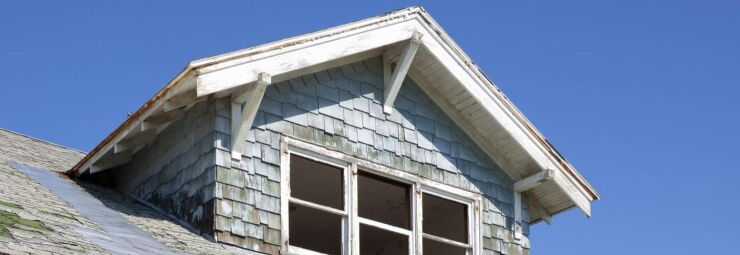Want unlimited access to top ideas and insights?
The current housing market is strong, with one major exception: a lack of entry-level inventory that’s making it extremely difficult for first-time buyers to purchase a home. According to
The shortage of new construction started decades ago, fueled by factors including land availability, zoning and usage regulations, a limited number of developers and construction laborers, a high cost of raw materials, and gentrification. According to a
But addressing the current lack of entry-level inventory isn’t quite as simple as building more houses. The construction industry is still plagued with supply chain issues which have only been exacerbated by the pandemic. The cost of lumber, which increased to a peak of 150% during the pandemic, has decreased over the past few months, yet it remains higher than pre-COVID-19 levels. In addition, since profit is a leading motivation for developers, they are not often particularly attracted by the low margin of starter homes.

"Unfortunately, it doesn't seem that building our way out of the challenging housing inventory supply issue is an option, based on the complexity of the economic and housing landscape. It will require looking at new solutions to resolve."
- Sam Khater, Vice President, Chief Economist and Head of Economic and Housing Research, Freddie Mac
Vacant Properties—An Untapped Resource
“One viable solution to address this challenge now and in the future is getting vacant and distressed properties back on the market as a source of supply for affordable housing,” suggests Daniel Ticona, director of Housing Solutions for Freddie Mac Single-Family. The most recent U.S. census data notes that in the second quarter of 2021 there were 3.8 million other vacant units, defined by the census as “units that are neither on the market, held for future occupancy nor used only seasonally.” According to the Freddie Mac research, as of the fourth quarter of 2020 the U.S. had a housing supply deficit of 3.8 million units; between 2018 and 2020, the housing stock deficit increased by approximately 52%.
Before homebuyers can use this untapped source of supply, the industry must address some obstacles. Currently, many vacant properties are acquired by investors who raze or repurpose and sell them or convert them into rental units, further depleting housing stock and raising prices. To encourage them to consider other options including repurposing them into affordable homes, investors and developers could benefit from education, opportunities to join with housing ecosystem partners, economic incentives such as tax advantages, and budgetary and policy support. Nurturing and encouraging social-minded developers of color who are looking to help revitalize or redevelop tipping point neighborhoods can also be a solution to change this dynamic.
Collaboration and Creative Solutions Are Needed

“Solutions may be found by looking at housing supply challenges through a new and different lens,” Ticona points out, “and by enabling collaboration between different stakeholders within the housing and community landscape and the creation of infrastructure to support change.”
- Daniel Ticona, Director of Housing Solutions, Freddie Mac Single-Family
Identifying, optimizing and financing these vacant and distressed properties requires processes, understanding and partnership as well as better capacity and capabilities to manage the growing inventory and assure it remains affordable over the long term. Educating the industry on options will also drive sustainable homeownership. While individual homes benefit a singular family, a broader approach may help the nation. Freddie Mac and partners are thinking outside of the box through solutions like:
- Community revitalization efforts including the Freddie Mac Community ChampionSM program, which features explicit collaboration between nonprofit developers, counseling agencies, lenders, real estate professionals and homebuyers to facilitate the acquisition and rehab of city-owned properties. Industry experts can connect consumers to sources of aging or distressed stock, make borrowers aware of renovation financing options, coordinate complex renovation and documentation, and educate housing ecosystem stakeholders about how this type of financing can close housing supply gaps.
- Land banking, a process for local governments and municipalities to manage properties that are vacant, abandoned or foreclosed, creating a programmatic approach to transform unused housing units into community assets and affordable housing stock. Freddie Mac is focusing on bringing this concept out of the corner and into the center of the housing ecosystem through partnerships with organizations like the Omaha Land Bank, through which innovative strategies are tested which convert vacant properties into community assets and homeownership opportunities for low- and moderate- income borrowers.
- Educational initiatives like the Freddie Mac Develop the DeveloperSM program, which provide training, mentorship, technical assistance and sponsorship to minority and BIPOC developers committed to redeveloping underserved and underinvested communities through the acquisition and development of vacant or distressed houses.
Innovative Financing Puts Buyers into Vacant Homes—while Funding Necessary Renovations
Many homebuyers do not have technical experience in initiating and overseeing renovation projects and may bypass this untapped housing stock source due to a lack of awareness around the financing needed to fund repairs and upgrades. Industry experts can work with them to identify a vacant or distressed home, after which lenders can help a homebuyer finance its purchase as well as integrate major and minor upgrades and repairs through renovation mortgages. There is often limited understanding among borrowers as to how this type of financing works though, so education is crucial for them to consider it a feasible option. Since this type of loan is secured by the property, the amount is limited by the contributory value of the renovation. Therefore, homebuyers need to understand that costs do not translate dollar-for-dollar to an increase in a home’s value. Improvements like an updated kitchen or new energy-efficient windows, for example, may offer more ROI than a new entryway.
When it comes to renovation financing, options already exist for lenders to utilize to address specific borrower challenges and needs, and Freddie Mac is expanding support for the market with mortgage solutions that revitalize neighborhoods through the purchase and improvement of vacant and distressed properties.







